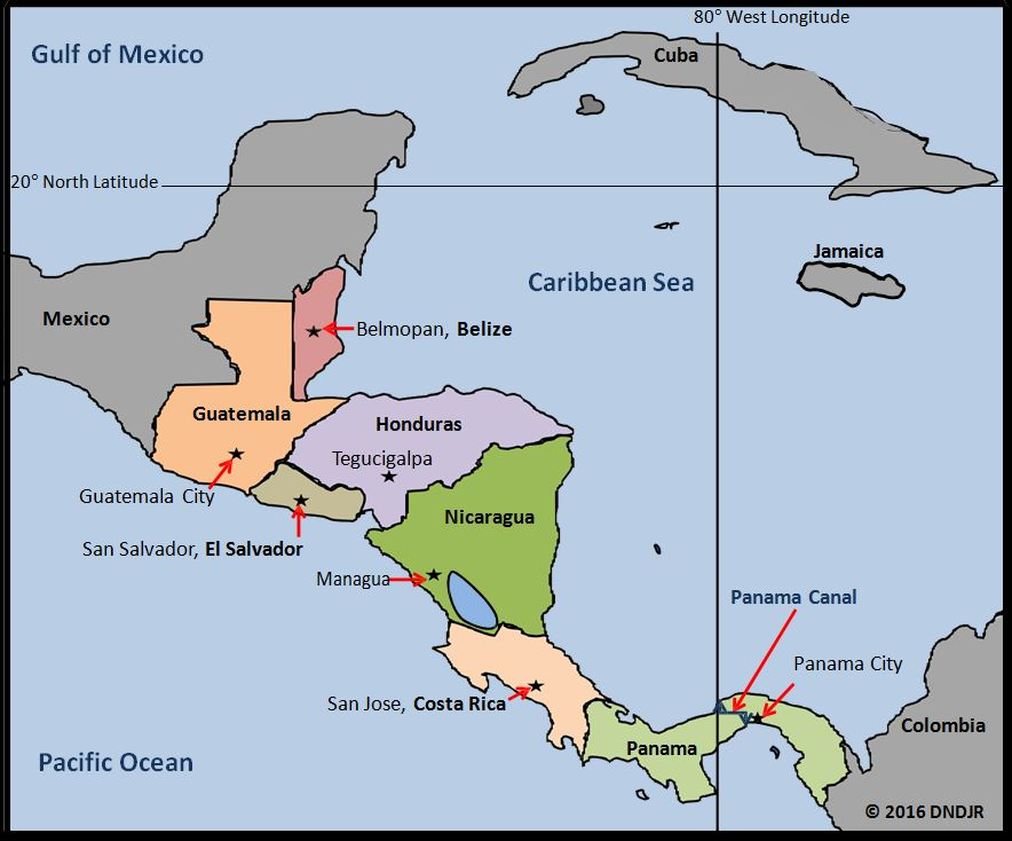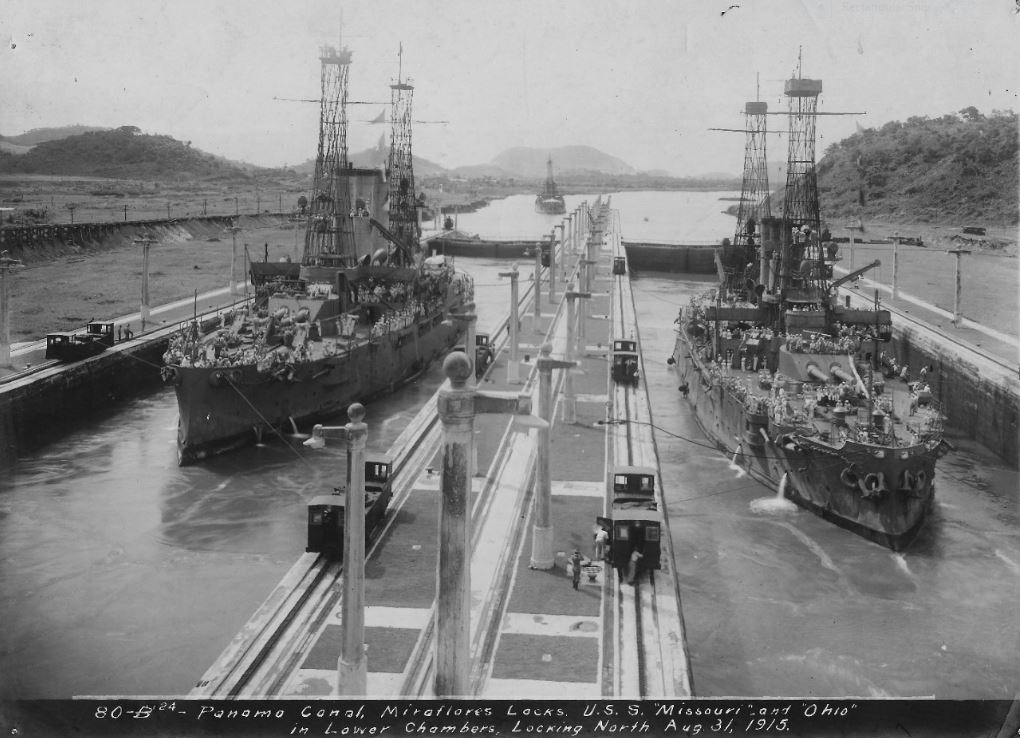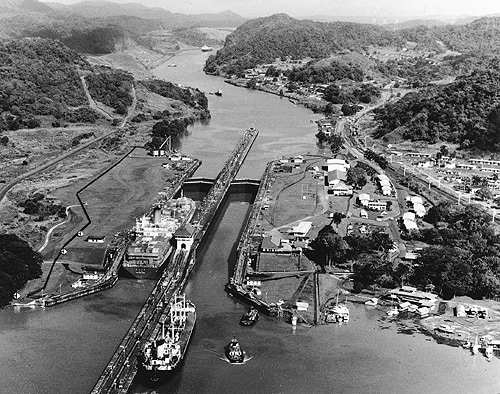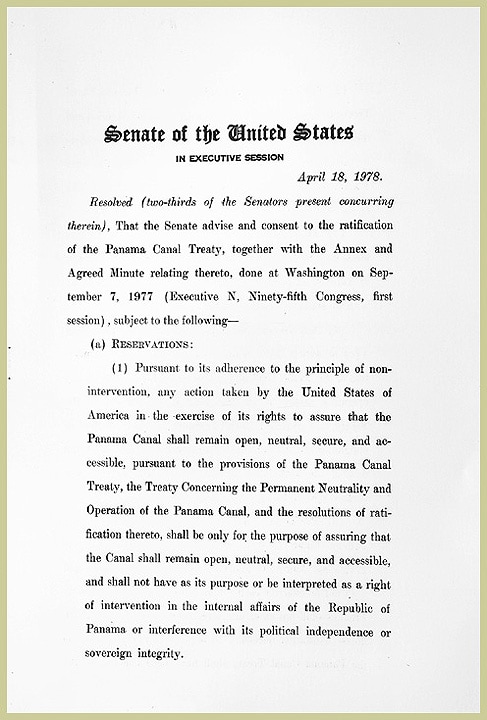Central America and the Panama Canal
The region that is referred to as Central America is part of the North American continent. It is bordered to the north by Mexico and Columbia to the south. There are seven countries in Central America: Belize, Costa Rica, El Salvador, Guatemala, Honduras, Nicaragua, and Panama.
|
Belize
Capital Belmopan Nationality Belizean Official Language English 62.9% Population 353,858 (July 2016 est.) Literacy Rate Not Available Gross Domestic Product (PPP) $3.049 billion (2015 est.) Major Exports sugar, bananas, citrus, clothing, fish products El Salvador Capital City San Salvador Nationality Salvadoran Official Language Spanish Population 6,156,670 (July 2016 est.) Literacy Rate 88% Gross Domestic Product (PPP) $52.95 billion (2015 est.) Major Exports offshore assembly exports, coffee, sugar, textiles and apparel, gold Honduras Capital City Tegucigalpa Nationality Honduran Official Languages Spanish Population 8,893,259 (July 2016 est.) Literacy Rate 88.5% Gross Domestic Product (PPP) $41.06 billion (2015 est.) Major Exports coffee, apparel, shrimp, automobile wire harnesses Panama Capital City Panama City Nationality Panamanian Official Languages Spanish Population 3,705,246 (July 2016 est.) Literacy Rate 95% Gross Domestic Product (PPP) $87.2 billion (2015 est.) Major Exports fruit and nuts, fish, iron and steel waste, wood |
Costa Rica
Capital City San Jose Nationality Costa Rican Official Language Spanish Population 4,872,543 (July 2016 est.) Literacy Rate 97.8% Gross Domestic Product (PPP) $74.89 billion (2015 est.) Major Exports bananas, pineapples, coffee, melons, ornamental plants Guatemala Capital City Guatemala City Nationality Guatemalan Official Language Spanish 60% Population 15,189,958 (July 2016 est.) Literacy Rate 81.5% Gross Domestic Product (PPP) $125.9 billion (2015 est.) Major Exports sugar, coffee, petroleum, apparel, bananas Nicaragua Capital City Managua Nationality Nicaraguan Official Languages Spanish Population 5,966,798 (July 2016 est.) Literacy Rate 82.8% Gross Domestic Product (PPP) $31.33 billion (2015 est.) Major Exports coffee, beef, gold, sugar, peanuts |
_________________________________________________________
Brief History of the Panama Canal
The idea for creating a canal across the Isthmus of Panama originated shortly after the Spanish explorers reached the Isthmus of Panama in 1501. Early explorers and settlers arrived in a tropical environment that was characterized by thick jungles, low mountains, and large fast flowing rivers that were fed by heavy rainfall.
Spain settled and ruled Central America as a colony until rebellions began to occurs in the colonies. Panama declared its independence from Spain in 1821 and joined several other former colonies to form the new nation of Gran Colombia.
The idea for railroad across the Isthmus of Panama came about after the discovery of gold in California in 1848. Thousands of people traveled by ship to Isthmus and made their way through the jungle to the ships waiting on the Pacific side. American investors secured the right to build the railroad from the Columbian Government and construction was completed in 1855. The new railroad linked Panama City on the Pacific Ocean side and the new city of Colón on the Caribbean Sea side.
The first country to secure a treaty with Columbia to build the Panama Canal was France. They signed a treaty in 1878 that gave them exclusive right to build a canal across the Isthmus of Panama. Initially, the French were going to build a sea-level canal across the Isthmus, but the futility of this plan became obvious after some time and they changed their plan in 1887. The new plan called for a system of locks and reservoirs created by dams that would move ships over the mountains. Along the way they also purchased the Panama Railroad.
Spain settled and ruled Central America as a colony until rebellions began to occurs in the colonies. Panama declared its independence from Spain in 1821 and joined several other former colonies to form the new nation of Gran Colombia.
The idea for railroad across the Isthmus of Panama came about after the discovery of gold in California in 1848. Thousands of people traveled by ship to Isthmus and made their way through the jungle to the ships waiting on the Pacific side. American investors secured the right to build the railroad from the Columbian Government and construction was completed in 1855. The new railroad linked Panama City on the Pacific Ocean side and the new city of Colón on the Caribbean Sea side.
The first country to secure a treaty with Columbia to build the Panama Canal was France. They signed a treaty in 1878 that gave them exclusive right to build a canal across the Isthmus of Panama. Initially, the French were going to build a sea-level canal across the Isthmus, but the futility of this plan became obvious after some time and they changed their plan in 1887. The new plan called for a system of locks and reservoirs created by dams that would move ships over the mountains. Along the way they also purchased the Panama Railroad.
|
Although funds to build the canal were always an issue, the biggest problem that the builders faced was disease. Yellow fever and malaria combined to make building the canal a deathtrap for many workers. Many of the workers came from desperately poor Caribbean countries were workers jumped at the chance to earn a living. The French were not immune to disease either. Jules Dingler, the Director General of the canal project, was a sad case in point. Within a year his daughter Louise died of yellow fever. This was followed shortly thereafter by the death of his son and his daughter's fiancé- also of yellow fever. If that were enough, his wife died a year later of the same disease.
After spending millions of dollars on the project the French company finally ran out of money and stopped all activity. The United States of America meanwhile had been interested in building a canal for many years. But the Americans had studied three possible routes- one across Mexico, one across the Isthmus of Panama, and another across Nicaragua. Support in Congress eventually split between those in favor of Nicaragua and those who wanted to complete the French had failed to do in Panama. Interestingly, the image of volcano on a Nicaraguan postage stamp helped to win over enough support for a canal in Panama. The United States Senate to approve the Panama canal plan in 1902. Unfortunately, when the United States attempted to negotiate a treaty with Columbia, things did not go well. Representatives from both countries were able to negotiate a treaty settled all of the details (Hay-Herran Treaty). But instead of signing the treaty, the government in Columbians rejected it and demanded more money. During this same time, a Frenchman by the name of Philippe Bunau-Varilla, was scheming to make things work in a different way. Bunau-Varilla had been an investor and manager on the original French project. He stood to gain back his investment if a deal were reached with the United States to buy the French concession. Taking the initiative, Bunau-Varilla organized an independence movement and made it known to the U.S. of his intentions. American naval vessels soon appeared off both coasts of the Isthmus and Panama declared its independence. A new treaty was completed between Panama and the United States, the Hay-Bunau-Varilla Treaty, and it was ratified by the Senate on February 23, 1904. The treaty granted the United States the land to build the canal plus five miles of land on both sides. The stage was set for the Americans to build the Panama Canal. One of the first tasks to be completed was the war on the diseases of the region. Dr .William C. Gorgas was appointed as the Chief Sanitary Officer and he proved to be one of the most important people involved in building the Panama Canal. He used the latest research to conclude that yellow fever was transmitted by Aedes aegypti mosquitoes. Knowing that this type of mosquito thrived in areas where humans lived and worked helped him to combat the disease problem. Anti-mosquito measures were put in place such as using screens over windows, mosquito nets over beds, eliminating pools of standing water, putting drops of oil in areas that could not be drained. Gorgas and his team succeeded in drastically eradicating yellow fever and lowering the number of cases of malaria. With the area safe, crews were brought in and construction lasted several years. Eventually, on January 7, 1914, the first vessel made its way across the newly completed Panama Canal. The Panama Canal opened for international shipping on August 15, 1914. The Panama Canal has operated successfully since 1914. But, things have changed over the years. In 1977 the United States Government signed the Torrijos - Carter Treaty with the Republic of Panama. The treaty provided for the return of the Panama Canal to Panama no later than December 31, 1999. American operation of the day to day operations of the Panama Canal ended on September 30, 1979. The American Government continued to have a presence via the Panama Canal Commission until the Panama Canal was formally handed over to the Republic of Panama in 1999. |
|



